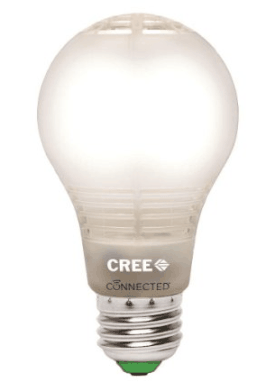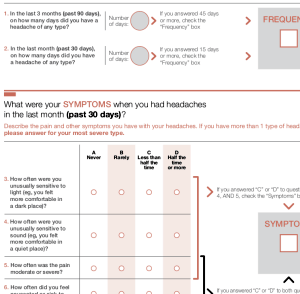Flickering Lights: No More Excuses
A few years ago, as more and more CFL light bulbs started flooding the market, many people found that the lights meant more migraine attacks. Reasons for that aside, we either had the choice to cling to the less energy efficient incandescent bulbs, or make a major investment in LED bulbs.
Those days are over. The price of LEDs has plummeted, and there is no reason why you shouldn’t start changing your bulbs over today.
Why LEDs?
Like CFLs, LED bulbs are designed to replace the traditional incandescent bulbs. But LED bulbs are designed to be more energy efficient (and so cheaper!), and to last longer than their predecessors. They don’t have the flicker of CFLs (which some people claim is the trigger for migraine attacks), and they don’t get hot like incandescent bulbs (an energy waster, and a problem if you’re trying to control the temperature during a migraine attack).
How to buy LED bulbs
There are some things you should know before jumping into the LED world. First, ignore the watts if you want to know how bright the bulb will be. What you need to know about is lumens, an actual measurement of light.
Here’s a quick chart to help you out. A traditional incandescent bulb of so many watts – how many lumens would that be?
- Incandescent 40 watt = 450 lumens
- Incandescent 60 watt = 800 lumens
- Incandescent 75 watt = 1100 lumens
- Incandescent 100 watt = 1600 lumens
Take for example the CREE 800 lumen bulb. It’s only drawing 8.5 watts, but as as bright as an incandescent 60 watt (and should last 15-20 years!).
The other thing you need to know about LED bulbs is that they don’t dim like a traditional bulb. If you connect it to an old dimmer switch, it might just get confused, because that kind of dimming relies on changing the wattage. So find an LED that is compatible with an older dimmer switch.
Watch out! Some LED lights still flicker with a dimmer. A CNET test recommended the Phillips A19 (60 watt equivalent) as a great quiet, non-flicker option.
As with any bulb, you need to also think about colour. There are bulbs with a warmer glow, and others with more of a daylight feel. And you need the bulb that will fit wherever you want to put it.
The Next Level: Smart LEDs
 You’re lying in bed, and you just need to dim the lights a bit? No problem. And it won’t cost you a fortune either.
You’re lying in bed, and you just need to dim the lights a bit? No problem. And it won’t cost you a fortune either.
Check out this amazing Cree Soft White 815 lumen dimmable bulb. This will work with various home automation systems (it’s a long story, but some of these bulbs are designed to work with a hub – check the details before you buy!).
One option is to get a starter pack, like this highly rated Philips Hue LED Starter Kit, which comes with 2 bulbs and a hub, which can be controlled through your smart phone or systems like Echo and and Wink.
Many people find that the colour of light around them makes a huge difference during a migraine attack, or even when it comes to preventing them. Yes, some smart bulbs will change colour for you.
Take for example the remarkable LIFX LED Smart Bulb. A little on the pricey side compared to some of the others we’ve talked about, but you have complete control via it’s special apps (no hub required) to change the colours, set schedules (so that the light will gradually dim at night, gradually turn on in the morning, — no more harsh changes! — and even go on and off when you’re not home), and change the mood. 🙂
The Bottom Line
At less than US$15 per bulb (currently under US$4 in a pack) for even a dimmable or smart bulb, this is really a great time to change the lighting in your home. Light has a tremendous effect on mood and health, as migraine patients know. Being able to control colour, or just turn lights off from your bed, is a tremendous advantage (in the case of smart bulbs).
You will rarely ever change a bulb again with LEDs, and you’ll be saving money by using far less electricity. LEDs are also safer to dispose of than CFLs.
Check your options today – Cree is an excellent brand to start with if you’re not sure (I see a six pack at less than US$4 per bulb).
Here are a lot more options. Check the left sidebar to help you choose the exactly right bulb for your – bedroom, fridge, dining room, man cave …
By the way, if you’re wanting to start small, think about where you are most of the time, or where you are during a migraine attack. For example, why not start with a bedside light?
Check out our discussions from a few years ago, in particular regarding lighting in the workplace:

 Why don’t we talk about it? Here are some possible reasons – feel free to add your own.
Why don’t we talk about it? Here are some possible reasons – feel free to add your own. Enter ID-CM, otherwise known simply as Identify Chronic Migraine.
Enter ID-CM, otherwise known simply as Identify Chronic Migraine.
 But how does this medication compare to migraine-specific medications, such as the ever-popular sumatriptan?
But how does this medication compare to migraine-specific medications, such as the ever-popular sumatriptan?